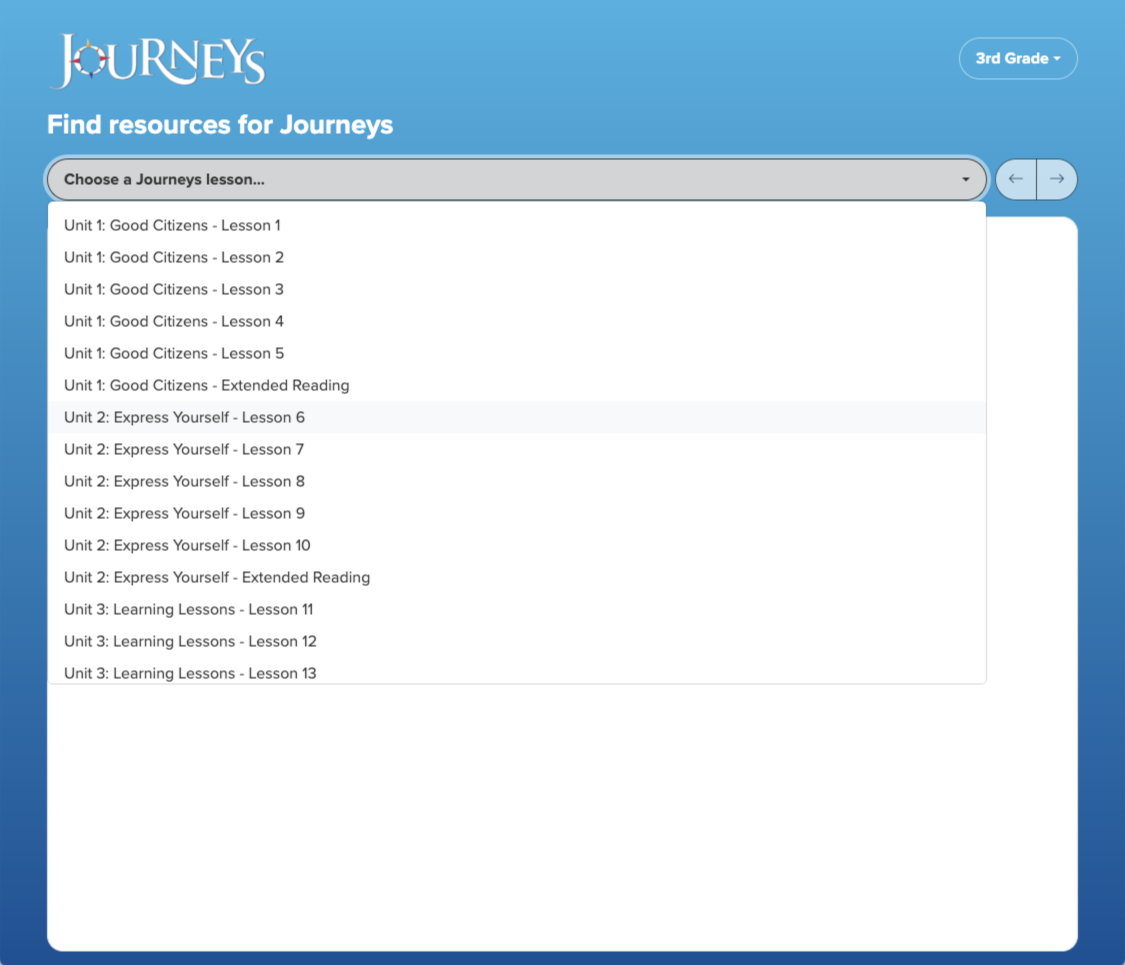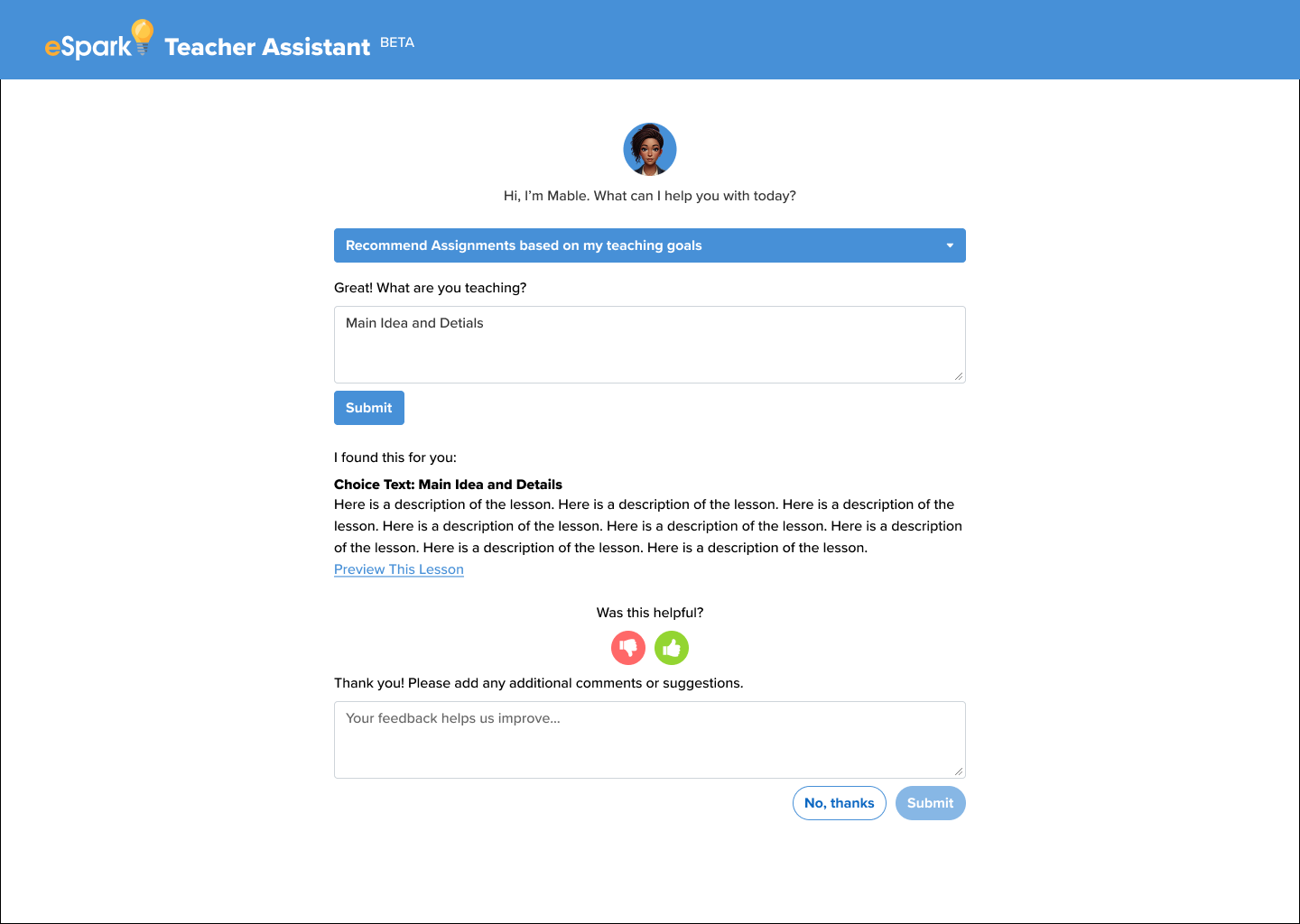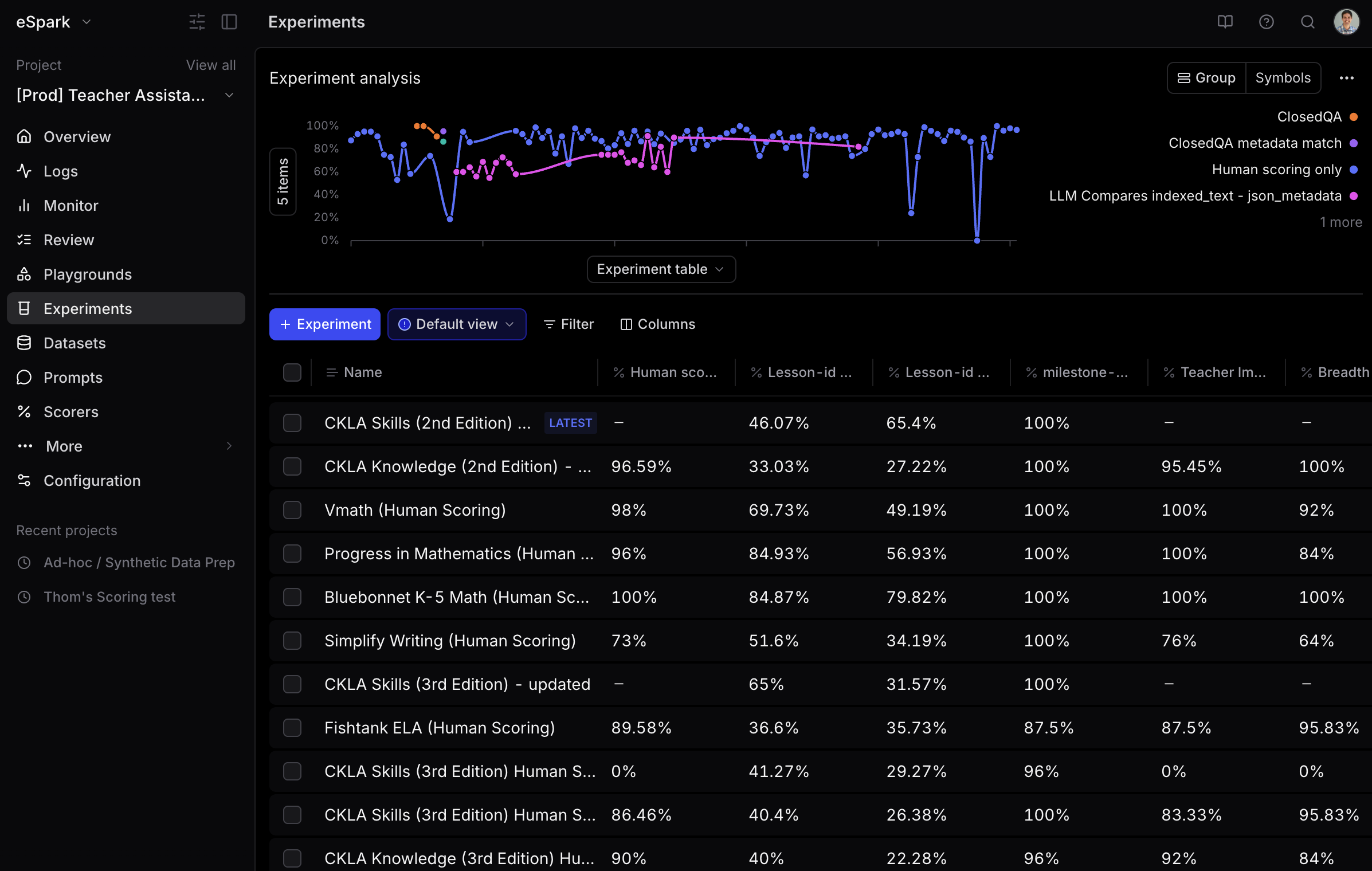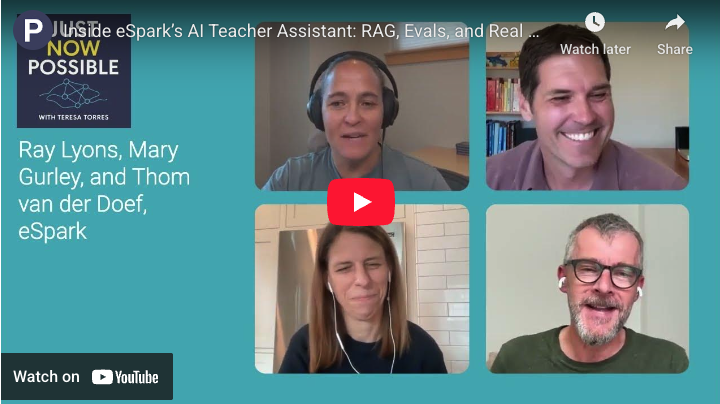Increasing teacher efficacy with
AI-powered lesson recommendations.
eSpark Learning, 2024 • Lead Product Designer • 8 Months concept to launch
Product Manager, Product Designer, 2 Engineers, 2 Learning Designers
Problem: Staying relevant in a post-COVID market
In 2024 I led a series of teachers and administrators interviews that uncovered 2 major new insights:
After COVID, administrators shifted focus and $$ from supplemental tools like eSpark to larger Core Curriculum investments.
Teachers were increasingly overwhelmed and frustrated by the demands of their Core Curriculum
How can we use eSpark’s data and curriculum to actively assist teachers with Core instruction?
“Are they going back to the eSpark data to guide instruction? Not really — they’re just using it as independent work.”
“I’m booked full and overwhelmed with the amount of stuff I need to get through”
Introducing Nova, AI-powered lesson recommendations
We built Nova, a teacher assistant that suggests eSpark Assignments, advice, and teaching strategies that align with a teachers’ Core Curriculum lesson.
Nova has transformed how teachers use eSpark: it increased Assignments usage by 300%, and aligned eSpark’s content to hundreds of popular curricula.
How did we get here?
Laying the groundwork
A future vision of an eSpark Assistant
To secure buy-in from leadership I created an interactive “vision” prototype that showed a variety of ways a Teacher Assistant could align our content better to district goals.
The board gave us 6 months to build a working prototype at scale.
A simple experiment
To find out what would be most valuable for teachers, we built a simple system that would allow us to collect data directly from teachers:
A simple text field where a teacher can enter their teaching goal for the day, and the Assistant retrieves matching eSpark Assignments.
We learned that teachers, more than anything, wanted recommendations that matched their Core Curriculum lesson.
Building a reliable and scalable system
It was critical that data retrieved and presented by the LLM, was relevant, accurate, personalized, and easy to understand.
I took ownership of prompt engineering, and I collaborated closely with engineers to build the data retrieval and output process.
We created a quantitative evaluation system that allowed us to iterate on prompts until we had consistently high quality output.
Designing the Teacher Assistant
One early finding from testing our prototype was that teachers struggled with the open text field. Teachers did not know what to type, or what outputs to expect.
Replacing the open text field with a simple dropdown to choose this weeks lesson from your Curriculum, took all the guess work out of the interaction.
To further understand what kinds of support and guidance teachers might want for their Curriculum lesson, each recommendation has 3 LLM-generated follow-up suggestions.
Open Text queries are moved to a separate tab to track what teachers are asking. After receiving a lot of support queries early on we adjusted the prompt to be able to answer these.
We designed and built a self-serve system that allowed the content team to add 12 new curricula per week, reaching over 150 Curricula 3 months after launch.
Shifting teacher behavior one prompt at a time.
+300%
Asignments MAU
+100%
Assignment Conversion
150+
Aligned Curricula
eSpark’s Assignment MAU was around 15% for 10 years. Nova raised this to 60% between all trial and paid users.
More Curriculum-aligned Assignments leads to higher standards mastery, more intentional usage of the program, and more actionable data for teachers.
“This is awesome!! I never used to use espark for math but now that you have my Into Math lessons embedded I will utilize it daily! SO great!!”
Reflection
AI-powered features should fit in a user’s existing workflow and mental model, even if that means replacing a conversational interface with a simple dropdown.
Learn more about how we built Nova with a small team in a matter of months in Teresa Torres’ podcast Just Now Possible.












